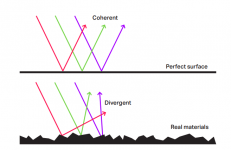- Joined
- Apr 23, 2019
- Messages
- 1,066
- Reaction score
- 1,953

Introduction
This is a quick and dirty performance-oriented article looking at Godfall’s FSR and Ray Tracing performance between a Radeon RX 6900 XT and GeForce RTX 3090. We are not going to look at image quality or talk about that. We are going to focus on the performance benefit that FSR (AMD FidelityFX Super Resolution) provides in Godfall on these two GPUs. We are also going to enable Ray Tracing in the mix to see how that performance with and without FSR.
Godfall is an action role-playing game developed by Counterplay Games and published by Gearbox Publishing and was released on November 12th of 2020. This game runs on the Unreal Engine 4. As of November 18th, 2020 a patch was released, patch 2.0.95 update which brought Ray Tracing support to Radeon RX 6000 series GPUs. It wasn’t until...
Continue reading...

